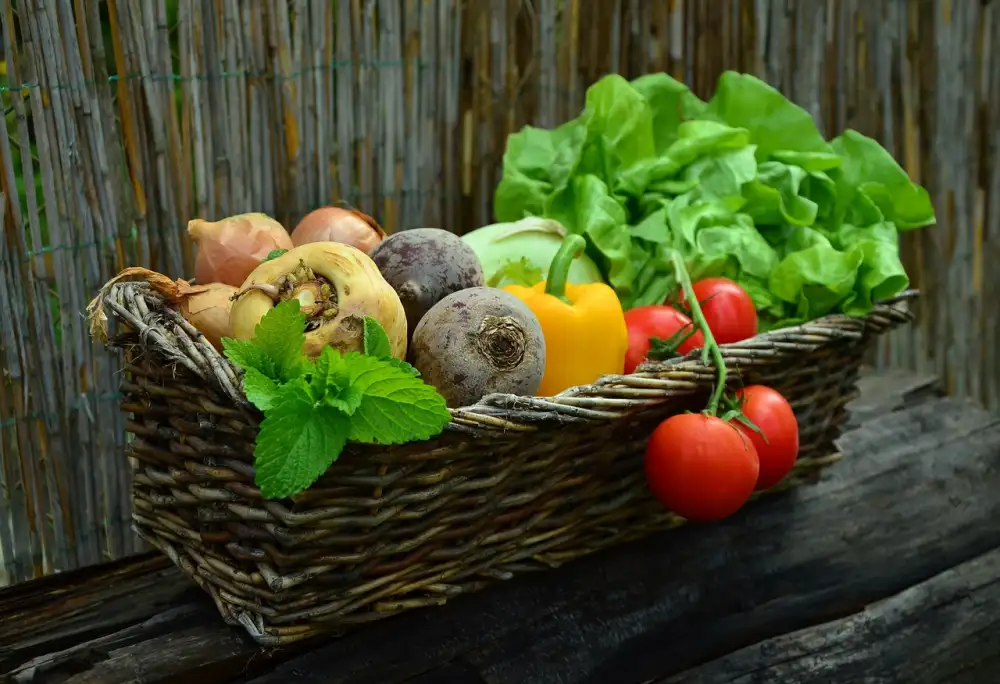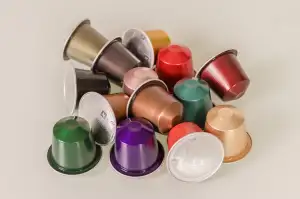Rhubarb Harvesting Guide: Discover the Perfect Time to Harvest Rhubarb in Your Home Garden

Rhubarb, with its vibrant red stalks and tart flavor, is a popular addition to many dishes. But before you can enjoy this delicious vegetable, you need to know the perfect time to harvest it from your home garden. Harvesting rhubarb at the right time ensures that you get the best flavor and texture. In this guide, we will explore the different stages of rhubarb growth, signs of readiness for harvest, and the correct techniques for harvesting rhubarb. So let's dive in and uncover the secrets of successful rhubarb harvesting!
Understanding Rhubarb Growth Cycle
To effectively harvest rhubarb, it is crucial to understand its growth cycle. Rhubarb is a perennial plant that goes through distinct stages of growth each year. In the early spring, rhubarb emerges from the ground as small, red shoots. These shoots quickly grow into large, green leaves that are characteristic of the plant.
During this stage, the rhubarb plant focuses on building up energy reserves in its roots. This energy is stored in the form of carbohydrates and is used to fuel growth and development throughout the season. As the leaves continue to expand, they provide shade for the developing stalks.
In late spring or early summer, rhubarb enters its flowering stage. During this time, tall flower stalks emerge from the center of the plant. It is important to note that these flower stalks should be removed promptly to prevent them from diverting energy away from stalk production.
After flowering, rhubarb transitions into its harvesting phase. This typically occurs in mid to late spring and continues until early summer. The timing may vary depending on your specific climate and growing conditions.
By understanding the growth cycle of rhubarb, you can better determine when it is ready for harvest and ensure optimal yield and quality.
Signs of Rhubarb Readiness for Harvest
Before you start harvesting your rhubarb, it's important to know when the plant is ready. Here are some signs to look out for:
1. Size: The stalks should be at least 10-12 inches long and about 1 inch in diameter. This indicates that the rhubarb has reached a good size for harvesting.
2. Color: The stalks should have a vibrant and rich color, typically deep red or green depending on the variety. Avoid harvesting rhubarb with pale or yellowish stalks as they may not be fully matured.
3. Firmness: Gently squeeze the stalks to check their firmness. They should feel crisp and firm, indicating that they are ready for harvest. If the stalks are soft or mushy, it's best to leave them on the plant for further growth.
4. Leaves: Examine the leaves of the rhubarb plant. If they are large and healthy-looking, it's a good indication that the plant is mature enough for harvesting. However, do not consume the leaves as they contain toxic substances.
By keeping an eye out for these signs, you can ensure that you harvest your rhubarb at its peak flavor and texture.
Best Time to Harvest Rhubarb
The best time to harvest rhubarb is in the spring, typically from April to June. It is important to wait until the plant has reached maturity before harvesting. This usually takes about two years after planting. During this time, it is crucial to allow the plant to establish a strong root system and grow healthy leaves.
To determine if your rhubarb is ready for harvest, look for thick and sturdy stalks that are at least 10-15 inches long. The stalks should be firm and have a vibrant color, usually ranging from bright red to pale green. Avoid harvesting any stalks that appear thin or weak, as they may not have fully developed their flavor.
Timing is key when it comes to harvesting rhubarb. It is recommended to wait until the stalks are fully grown but still crisp and tender. If you notice any signs of flowering or seed production, it means the plant has passed its prime for harvesting. Flowering can negatively impact the taste and quality of the rhubarb.
Remember that overharvesting can weaken the plant, so it's essential to leave a few stalks behind during each harvest. This allows the plant to continue growing and producing throughout the season.
By following these guidelines, you can ensure that you harvest your rhubarb at its peak flavor and texture. So get ready to enjoy delicious rhubarb pies, jams, and other culinary delights!
How to Harvest Rhubarb Correctly
When it comes to harvesting rhubarb, it's important to do it correctly to ensure a bountiful and healthy harvest. Here are some steps to follow:
1. Wait for the right time: Rhubarb can be harvested once the stalks are thick and firm, usually in late spring or early summer. Avoid harvesting during the first year of planting to allow the plant to establish itself.
2. Use a sharp knife or garden shears: To harvest rhubarb, cut the stalks at the base near the crown. Make sure your cutting tool is clean and sharp to prevent damage to the plant.
3. Pull gently: If you prefer not to use a knife, you can also pull the stalks by grasping them firmly near the base and giving them a gentle tug. The stalks should easily separate from the plant.
4. Remove any leaves: After harvesting, remove any leaves attached to the stalks immediately. Rhubarb leaves contain toxic substances and should never be consumed.
5. Leave some stalks behind: It's important not to harvest all of your rhubarb stalks at once. Leave at least one-third of the plant intact so that it can continue growing and replenish its energy reserves for future growth.
By following these steps, you can ensure a successful rhubarb harvest while maintaining the health and productivity of your plants. Enjoy your freshly harvested rhubarb in delicious recipes like pies, jams, or compotes!
Storing and Preserving Rhubarb
Once you have harvested your rhubarb, it's important to store and preserve it properly to maintain its freshness and flavor. Here are some tips on how to store and preserve your rhubarb:
1. Remove the leaves: Cut off the leaves from the rhubarb stalks as soon as you harvest them. The leaves contain oxalic acid, which can be toxic if consumed in large quantities.
2. Rinse and dry: Rinse the stalks under cold water to remove any dirt or debris. Pat them dry with a clean towel before storing.
3. Refrigerate: Place the rhubarb stalks in a plastic bag or wrap them in a damp paper towel. Store them in the refrigerator for up to two weeks.
4. Freezing: If you have more rhubarb than you can use within two weeks, consider freezing it for long-term storage. Wash, dry, and chop the stalks into small pieces. Spread them out on a baking sheet and freeze until firm. Transfer the frozen pieces into freezer bags or containers and label them with the date.
5. Canning: Another way to preserve rhubarb is by canning it. Prepare a simple syrup by dissolving sugar in water and bring it to a boil. Pack chopped rhubarb into sterilized jars, leaving some headspace at the top. Pour hot syrup over the rhubarb, leaving ½ inch of headspace. Process the jars according to proper canning guidelines.
By following these storage and preservation methods, you can enjoy your homegrown rhubarb even after its harvest season has ended. Whether you choose refrigeration, freezing, or canning, make sure to label your stored rhubarb with dates for easy identification later on.
Remember that while frozen or canned rhubarb may not retain its crispness like fresh ones, they still work well in cooked dishes, jams, pies, and other recipes. So don't let any excess rhubarb go to waste – store and preserve it for future culinary delights!
Tips for Maximizing Rhubarb Yield
1. Fertilize regularly: Rhubarb plants benefit from regular fertilization to promote healthy growth and increase yield. Apply a balanced fertilizer, high in nitrogen, phosphorus, and potassium, in early spring and again after the first harvest.
2. Mulch around the plants: Mulching helps retain moisture in the soil, suppresses weed growth, and maintains a consistent temperature. Apply a layer of organic mulch, such as straw or compost, around the base of the plants to keep them healthy and productive.
3. Water adequately: Rhubarb requires consistent moisture to thrive. Water deeply once or twice a week during dry periods, ensuring that the soil is evenly moist but not waterlogged. Avoid overhead watering to prevent leaf diseases.
4. Divide mature plants: Over time, rhubarb plants can become crowded and produce smaller stalks. To maximize yield, divide mature plants every 4-5 years in early spring or late fall. Dig up the plant clump carefully and separate it into smaller sections with at least one bud per division before replanting.
5. Remove flower stalks promptly: If your rhubarb plant starts to produce flower stalks (bolting), remove them immediately. Flowering diverts energy away from stalk production and reduces overall yield. Cut off flower stalks at their base to encourage more vigorous growth.
6. Control pests and diseases: Regularly inspect your rhubarb plants for signs of pests or diseases such as aphids or fungal infections. Promptly address any issues using organic pest control methods or appropriate fungicides to protect your crop's health and maximize yield.
By following these tips, you can ensure a bountiful harvest of delicious rhubarb from your home garden year after year!
Harvesting rhubarb can be a rewarding experience, as you get to enjoy the delicious and tangy flavors in your favorite recipes. By understanding the growth cycle of rhubarb and knowing the signs of readiness for harvest, you can ensure that you pick your rhubarb at its peak flavor and texture.
Remember to harvest rhubarb stalks when they are firm and fully grown, but before they become woody or start to flower. Use a sharp knife or garden shears to cut the stalks at the base, being careful not to damage the crown or surrounding plants.
After harvesting, it's important to store and preserve your rhubarb properly. Remove any leaves attached to the stalks, as they contain toxic substances. Wash the stalks thoroughly and pat them dry before storing them in a plastic bag in the refrigerator. Rhubarb can stay fresh for up to two weeks if stored correctly.
To make the most of your rhubarb yield, consider freezing or preserving it for later use. You can chop the stalks into small pieces and freeze them in airtight containers or make delicious jams, jellies, or compotes that can be enjoyed throughout the year.
Lastly, remember these tips for maximizing your rhubarb yield: provide adequate sunlight and water, fertilize regularly with compost or organic matter, and divide overcrowded plants every few years.
So go ahead and enjoy the fruits of your labor! Whether it's a mouthwatering pie, a refreshing drink, or a savory sauce, your homegrown rhubarb will add a burst of flavor to any dish. Happy harvesting!
Published: 13. 12. 2023
Category: Home



